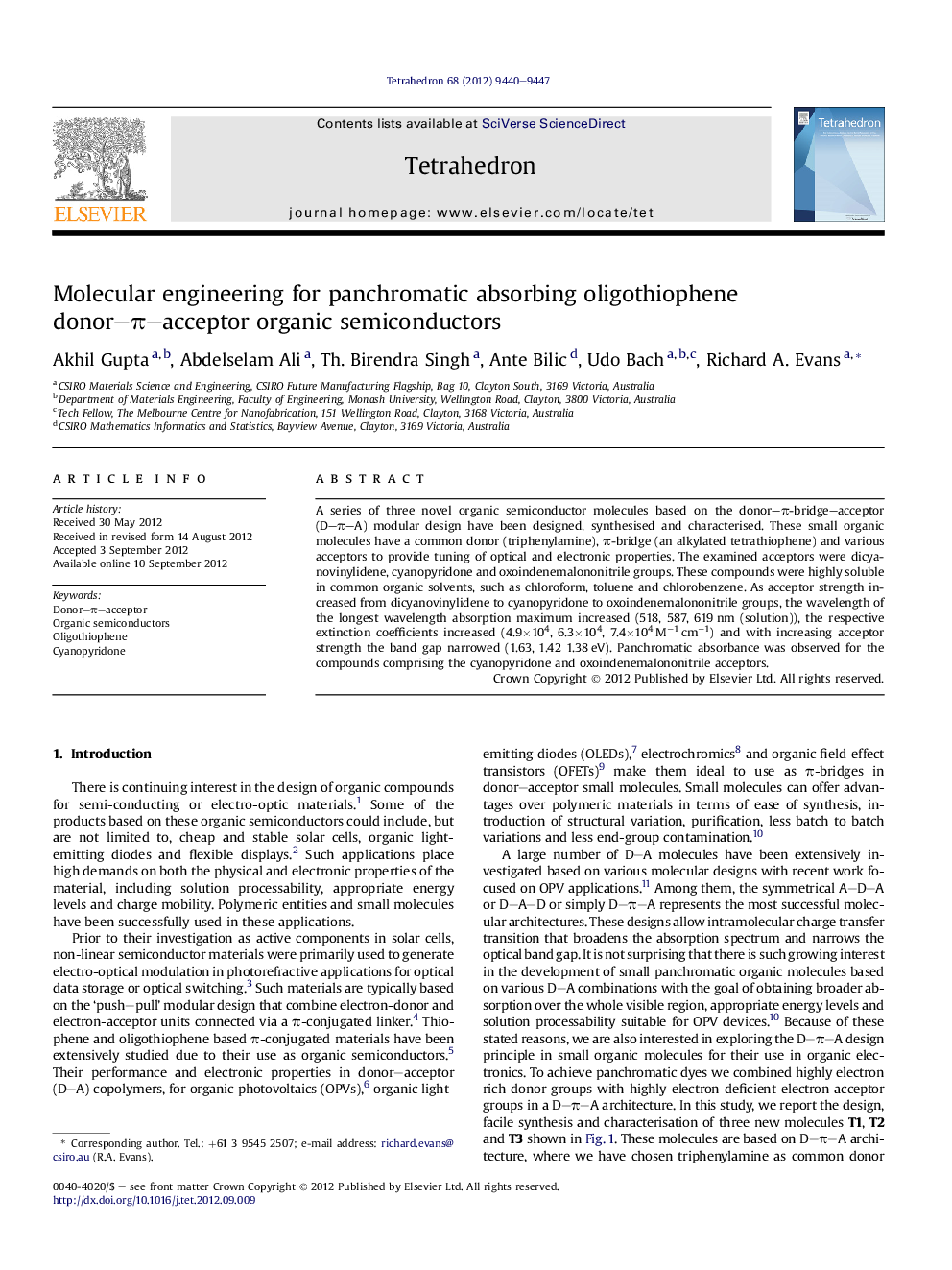| Article ID | Journal | Published Year | Pages | File Type |
|---|---|---|---|---|
| 5218172 | Tetrahedron | 2012 | 8 Pages |
A series of three novel organic semiconductor molecules based on the donor-Ï-bridge-acceptor (D-Ï-A) modular design have been designed, synthesised and characterised. These small organic molecules have a common donor (triphenylamine), Ï-bridge (an alkylated tetrathiophene) and various acceptors to provide tuning of optical and electronic properties. The examined acceptors were dicyanovinylidene, cyanopyridone and oxoindenemalononitrile groups. These compounds were highly soluble in common organic solvents, such as chloroform, toluene and chlorobenzene. As acceptor strength increased from dicyanovinylidene to cyanopyridone to oxoindenemalononitrile groups, the wavelength of the longest wavelength absorption maximum increased (518, 587, 619Â nm (solution)), the respective extinction coefficients increased (4.9Ã104, 6.3Ã104, 7.4Ã104Â Mâ1Â cmâ1) and with increasing acceptor strength the band gap narrowed (1.63, 1.42 1.38Â eV). Panchromatic absorbance was observed for the compounds comprising the cyanopyridone and oxoindenemalononitrile acceptors.
Graphical abstractDownload full-size image
